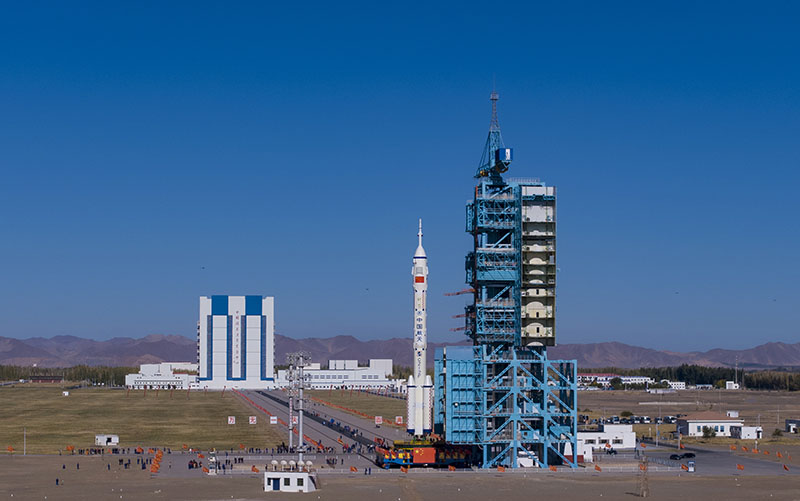
Strengthening Sci-Tech Cooperation to Address Common Challenges
By H.E. CONG Peiwu, Chinese Ambassador to Canada
As many friends have shown interest in China-Canada scientific and technological cooperation, I would like to share the latest progress of China’s international scientific cooperation with you. During the first Belt and Road Conference on Science and Technology Exchange held recently, China put forward the international science and technology cooperation initiative for the first time. This initiative emphasizes six key aspects: pursuing science, fostering innovative development, embracing opening-up and cooperation, promoting equality and inclusiveness, cultivating solidarity and coordination, and striving for win-win results. It also calls for advocating and practicing the concept of open, fair, just and non-discriminatory international cooperation in science and technology, adhering to the principle that “science has no borders and benefits all mankind,” and joining hands to build a global community of science and technology.
China has long been an advocate and practitioner of international cooperation in sci-tech innovation. Actively integrating itself into the global innovation network, it has contributed significantly to solving global problems. So far, China has established sci-tech partnerships with over 160 countries and regions, signed over 110 inter-governmental agreements on sci-tech cooperation. It has also launched initiatives like the international cooperation program of carbon neutrality innovation while actively participating in some of the major international science programs and projects, such as the International Thermonuclear Experimental Reactor (ITER) and the Square Kilometre Array (SKA), a radio telescope project. Furthermore, China has provided assistance in different ways to more than 160 developing countries, training hundreds of thousands of individuals from diverse backgrounds. Since 2013, China has hosted more than 10,000 young scientists from partner countries of the Belt and Road Initiative (BRI) to carry out short-term research and exchanges in China, and trained more than 16,000 technicians and management professionals for partner countries. China has established over 50 joint BRI laboratories in areas such as agriculture, new energy and health.

Let me give you an example. Juncao technology was first launched as an official assistance project in 2001, in Papua New Guinea. Over the last two decades, China has hosted more than 270 international training courses on Juncao technology, for more than 10,000 trainees from 106 countries. Today, Juncao technology has taken root in these countries, creating hundreds of thousands of green job opportunities for local youths and women.
The Chinese government makes innovation the core of China’s development endeavours, while continuously enhancing its innovation capabilities. In 2022, China spent about 3.08 trillion yuan (about 418.2 billion U.S. dollars) on research and development in 2022, which accounted for 2.54 percent of the GDP, ranking second worldwide. The World Intellectual Property Organization’s Global Innovation Index identified 24 Science and Technology clusters in China this year, with the country boasting the greatest number of clusters. Also, according to statistics, China contributed about 159,200 international co-authored papers to the Science Citation Index (SCI) database in 2022, which made up 21.6 percent of the total number of papers published in the country. At the same time, China has been constantly improving its basic research and original innovation, with breakthroughs achieved in some of the core technologies. It has witnessed the steady progress of its space station construction, with the successful arrival of astronauts. Recently, the crew of the Shenzhou-16 and Shenzhou-17 completed a successful in-orbit handover. China also leads the world in wind power and photovoltaic installed capacity, with its production and sales volumes of new energy vehicles topping the world for eight consecutive years. It also boasts the largest broadband network infrastructure around the world.
Currently, global challenges such as climate change, health, environmental protection, energy security, and food security are becoming increasingly prominent, calling for all countries to cooperate. Chinese President Xi Jinping noted, to overcome common development challenges, humanity needs international cooperation, openness, and sharing more than ever before. No country can be an independent innovation centre or enjoy the benefits of innovation alone. International sci-tech cooperation is not a zero-sum game but a process characterized by mutual learning and collaboration, with the purpose of ensuring more people around the world can benefit from the achievements of innovation. We should be committed to open science regardless of borders and with no barriers imposed, and uphold the principles of mutual respect, fairness, equality and non-discrimination. We should firmly oppose politicizing, instrumentalizing or weaponizing science and technology cooperation, instead, we need to foster an open and free international ecosystem for science and technology cooperation, and ensure that the sci-tech innovation achievements are shared by all.
Going forward, China will continue to implement the international science and technology cooperation initiative, expand international scientific exchanges and cooperation, as well as join hands with various countries, including Canada, to build a better world for mankind.
Photo: Ma li, iStock










